Learn how to make clarified butter for high heat cooking and frying. Clarified butter is butter that has been heated and the milk solids have been removed. Clarified butter is easy to make and stores longer than regular butter. Sear, deep fry and cook anything breaded with it. Use it in place of oil for high heat frying without the fear of burning the butter.
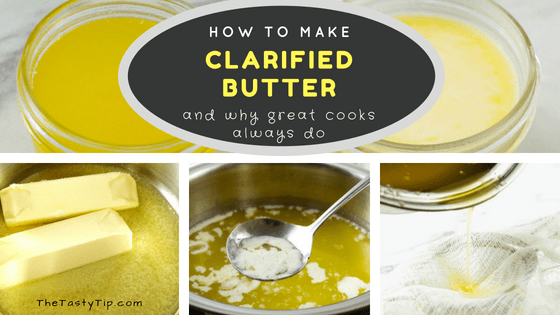
If you love to cook, you should learn how to make clarified butter. It has a mild taste and is not as rich as regular butter. It is liquid when heated, but is solid at cool room temperature or when refrigerated.
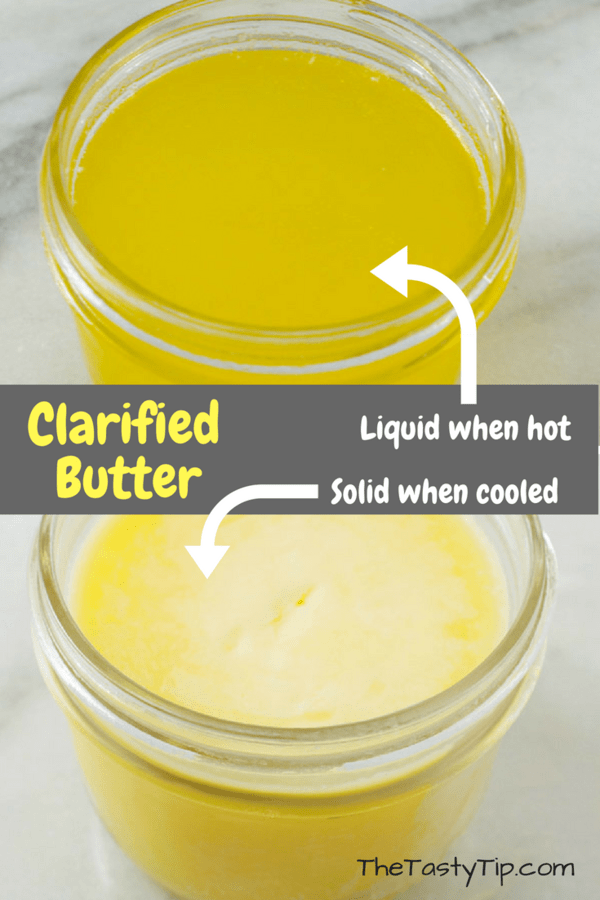
Use it in immersion blender hollandaise sauce, classic hollandaise sauce or other butter sauces. Saute or fry foods such as onion rings or French fries.
The Tasty History
Before refrigeration was common, people were creative when preserving their food. In northern Europe before refrigerators, butter was preserved with salt or buried in a cool bog. In Asia and Africa, the climate was much hotter than in Europe and so the people began clarifying butter as a way to preserve it. To preserve it even longer, they went a step further and made ghee, which can be stored at room temperature.
After refrigerators were invented, Europeans still made clarified butter. However they didn't clarify butter to preserve it. Instead, they melted and rendered the butter to use in high temperature cooking, such as sautéing and frying.
Professional kitchens have frequently used clarified butter, but now it is becoming more popular with the home cook. A small batch can be quickly made and kept in the refrigerator ready for searing, deep frying, sauce making and cooking anything breaded.
The Top Three Reasons to Clarify Butter
- Cook food at a higher temperatures than regular butter for a longer amount of time.
- Keep it fresh longer than regular butter. Clarified butter, stored in the refrigerator, lasts for several months (3 or 4 months). Regular butter is best used in three weeks or frozen up to a year according to the Dairy Farmers of Canada.
- Digests more easily for those who are lactose intolerant since milk solids are removed.
Breaking it Down
Butter has three components: butterfat, water and milk solids. When butter melts and the milk solids (consisting of proteins and carbs) are removed, only butterfat and water remain.
Butter rendered and clarified is a fat used in cooking, baking or frying. It is liquid when heated, but it solidifies at cool room temperature or when refrigerated.
Milk solids in butter cause the butter to burn and have a lower smoke point than oils. Smoke point is the temperature that an oil or fat can be heated before it starts smoking and burning. Only heat butter to 250º Fahrenheit or it will smoke, burn and turn acrid. Butter without milk solids can be heated up to 400º Fahrenheit without burning.
Milk solids collect at the bottom of the pan as the butter melts. Skim off the foam and any solids that float on the top. Pour out the butterfat leaving the milk solids behind.
Is Clarified Butter the Same as Ghee?
Ghee is clarified butter, but not all clarified butter is ghee. Ghee is clarified butter than has been heated longer. The milk solids begin to brown and the flavor becomes nuttier. As it simmers, all of the water is evaporated.
How to Make Clarified Butter
- Add unsalted butter to a saucepan on low heat. This recipe calls for one pound. However, add less or more butter, depending on the yield you want.
Please note: The yield will be about 25% less than the amount of butter you started with. If you started with one pound of butter, the yield will be approximately ¾ cup liquid clarified butter.
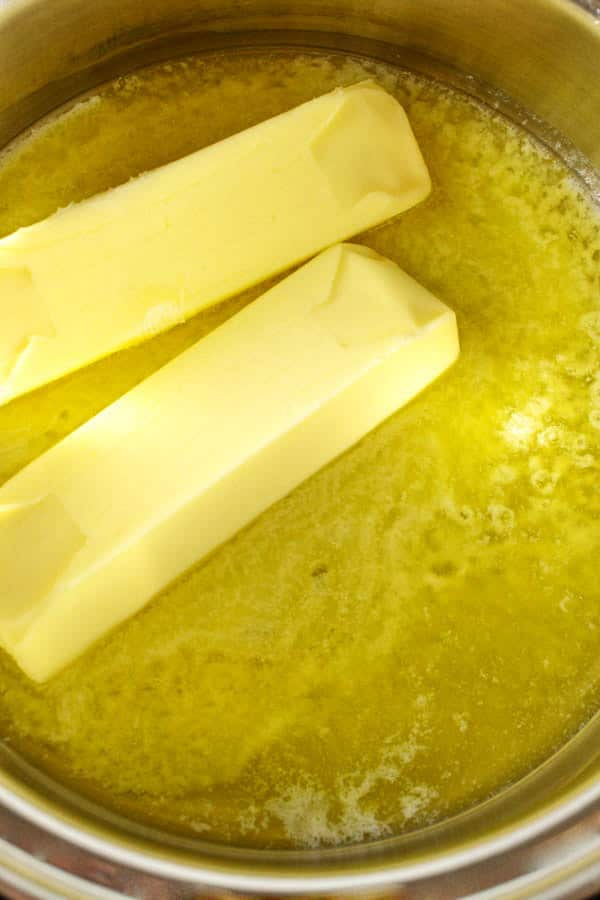
- As the butter melts, it will begin to sizzle. This is the water separating and evaporating. Foam and bubbles will collect on the top.
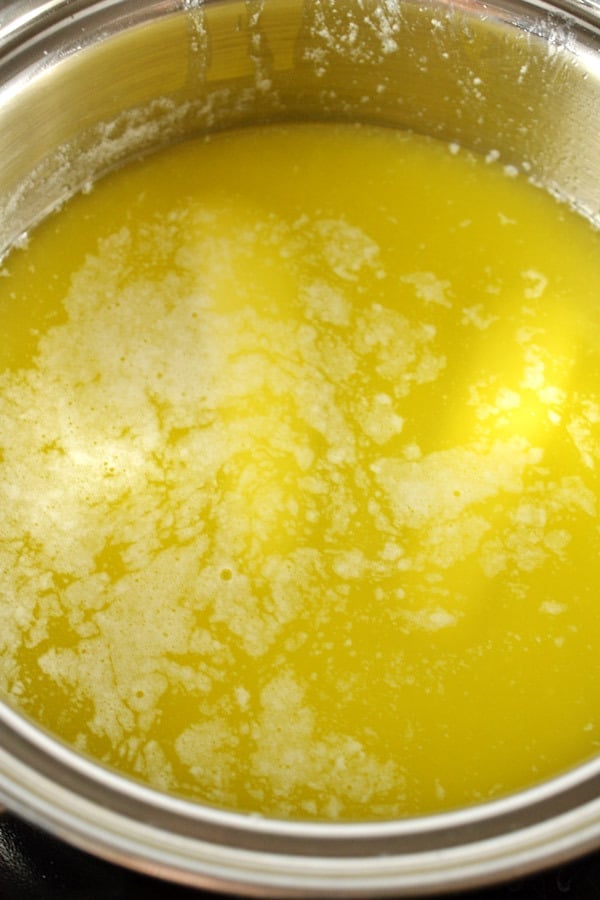
- The milk solids begin to separate from the butter fat. They will sink to the bottom of the pan.
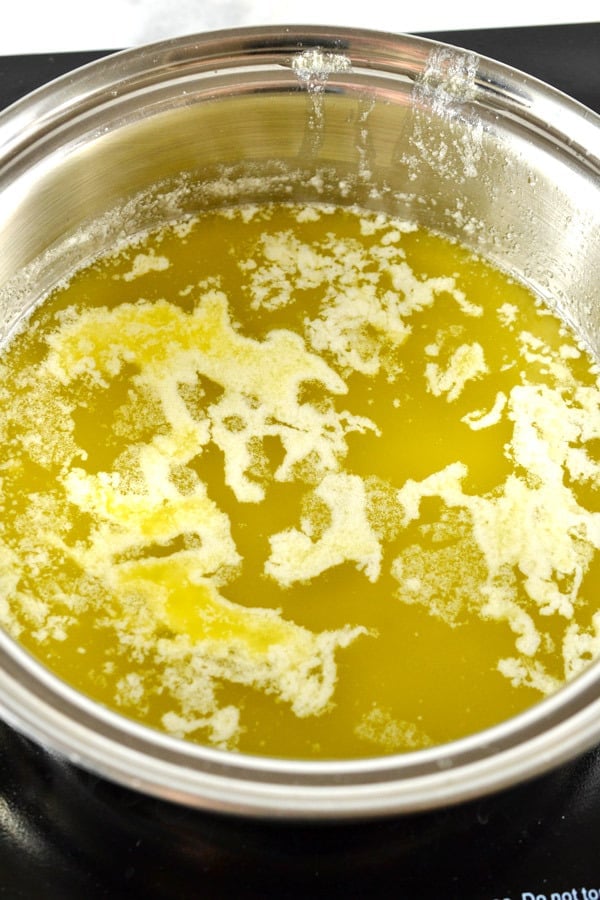
- Some milk solids and foam will float on the top. Use a spoon to skim them off. This can be tricky to get only the foam and not the butter fat.
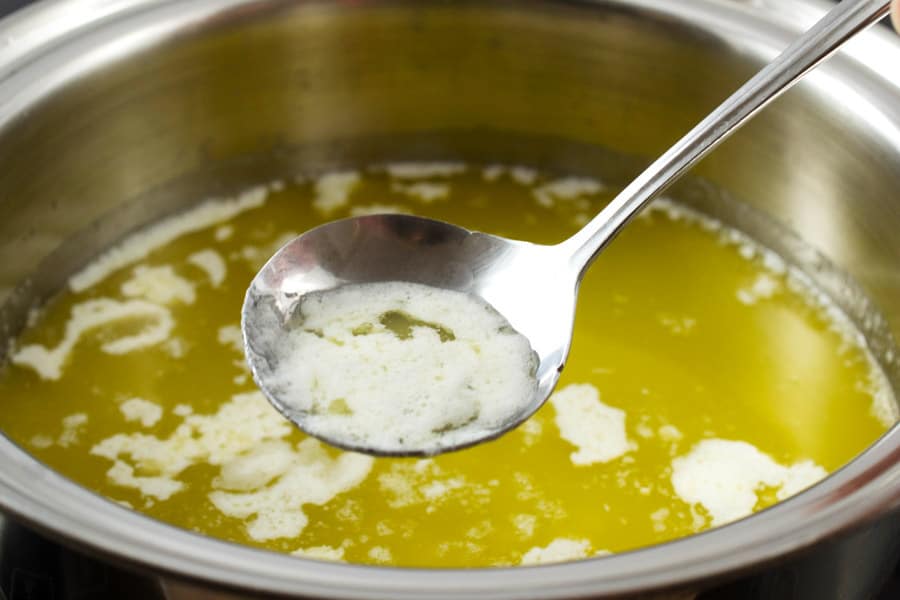
- As the butter sits, the milk solids sink to the bottom.
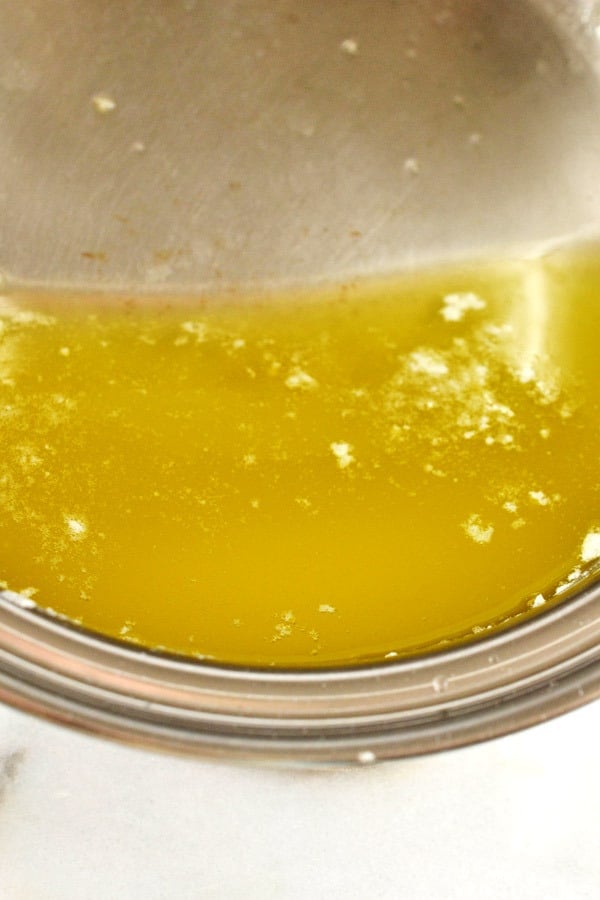
- Pour the melted butter through a coffee filter, cheesecloth or fine mesh to trap the milk fat.
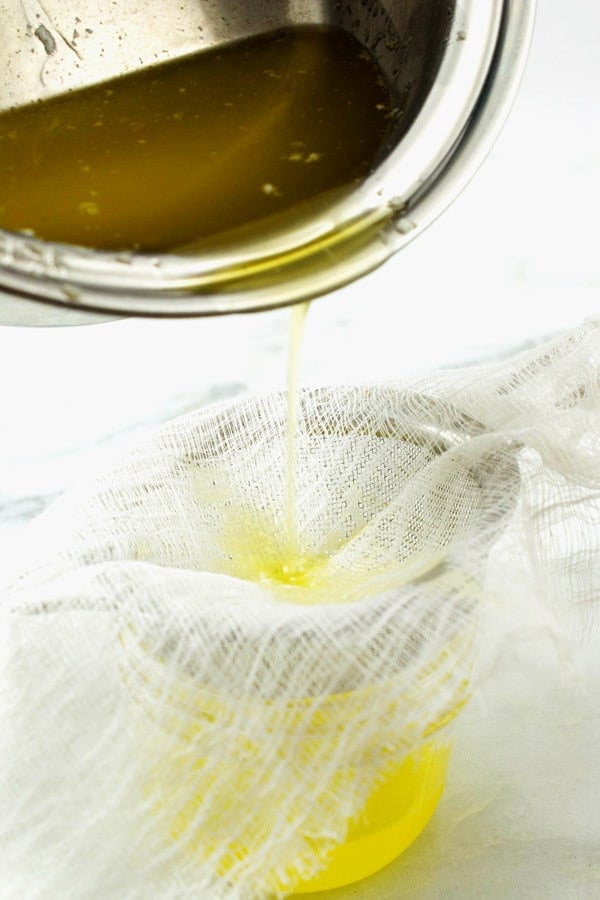
When to Use Clarified Butter
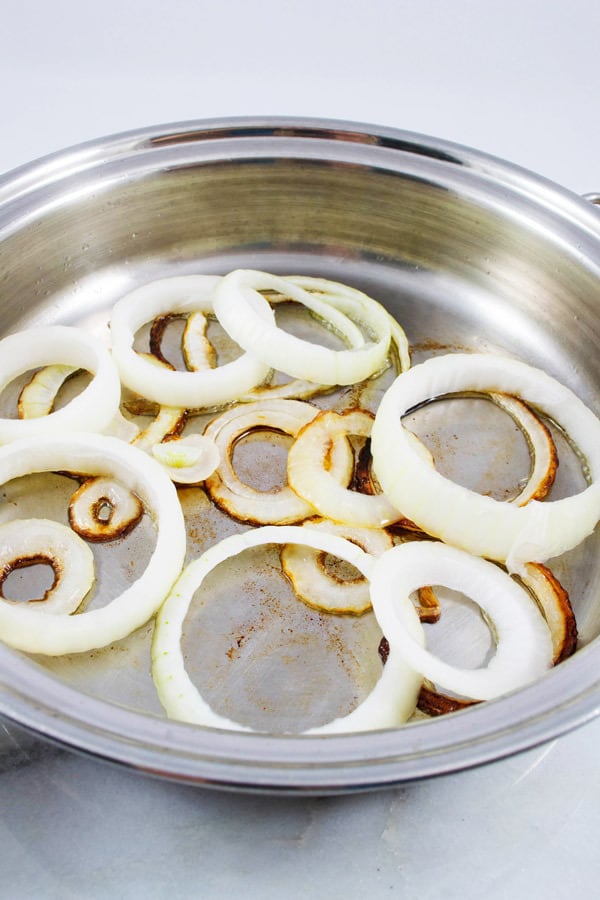
- Use it to make hollandaise sauce for eggs Benedict
- Sear meat
- Saute
- Fry food over high heat for a long time
Why Great Home Cooks Should Know How to Make Clarified Butter
If you are a home cook, you should know how to make clarified butter. Maybe you have a recipe calling for it or you just want to replace cooking oil as an experiment. While some grocery stores carry this item, clarifying your own butter has several advantages. Which is why great cooks always clarify their own butter.
Save Money: Clarified butter at a grocery store costs about twice as much money on average as regular butter.
Know Your Butter Quality: When you make your own clarified butter, you can choose the quality of butter you clarify. This makes a difference in the taste of the final recipe, especially if you are making a butter sauce.
Infuse Flavors into Butter: Flavor and clarify the butter at the same time by adding garlic, onions, herbs or spices as the butter heats and separates. When the butter is clarified, strain all the add-ins out before you use it.
Get Clarified Butter, Not Ghee: Almost every brand of clarified butter I ran across labeled it ghee at some point in the label. So are you buying ghee or clarified butter? They are similar, but they aren't the same thing. When you make your own, you know what you are getting.
Recipe
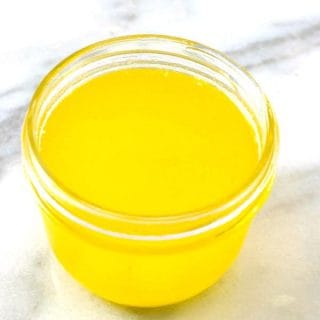
Classic Clarified Butter
Ingredients
- 1 pound unsalted butter*
Instructions
- ADD unsalted butter to a sauce pan warming over low heat.
- COOK approximately 5 to 10 minutes until the butter melts. There will be foam and bubbles on surface and the solids will sink to the bottom.
- SIMMER on low to medium-low heat until the milk solids and milk fat have separated, about 15 to 20 minutes. The milk solids will sink and some foam will float on the surface.
- SKIM off the foam from the top of the butter.
- STRAIN the butterfat into a container with a coffee filter or fine mesh cheesecloth. The milk solids should stay behind.
- Please note: Gentle, low heat is best. With a pound or more butter, it will take a bit longer to melt and clarify on low heat. Don't be tempted to turn up the heat or you may end up burning the butter.

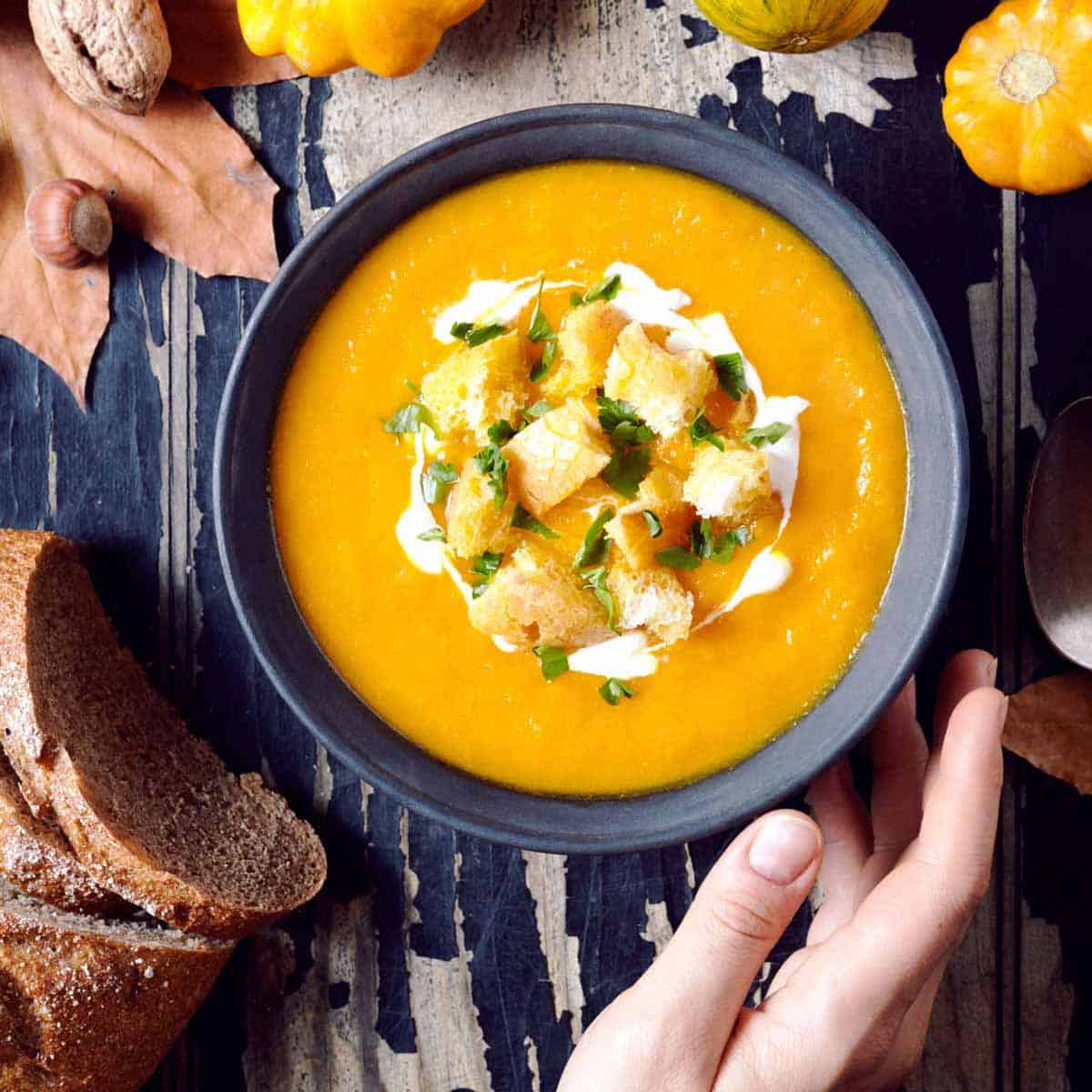
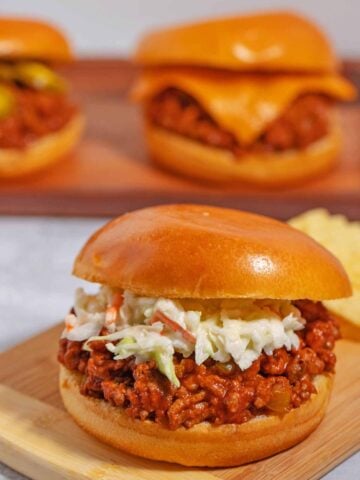
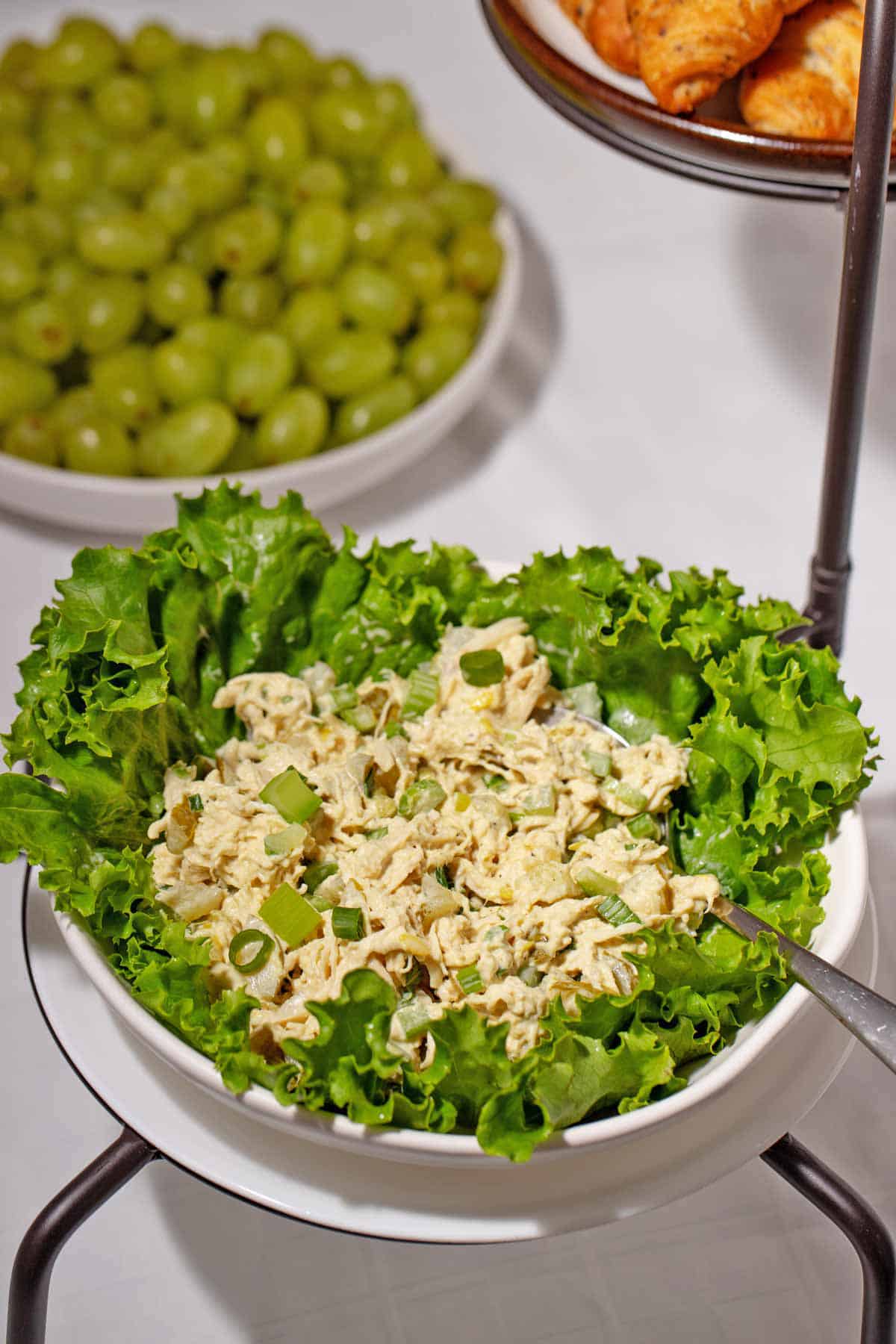
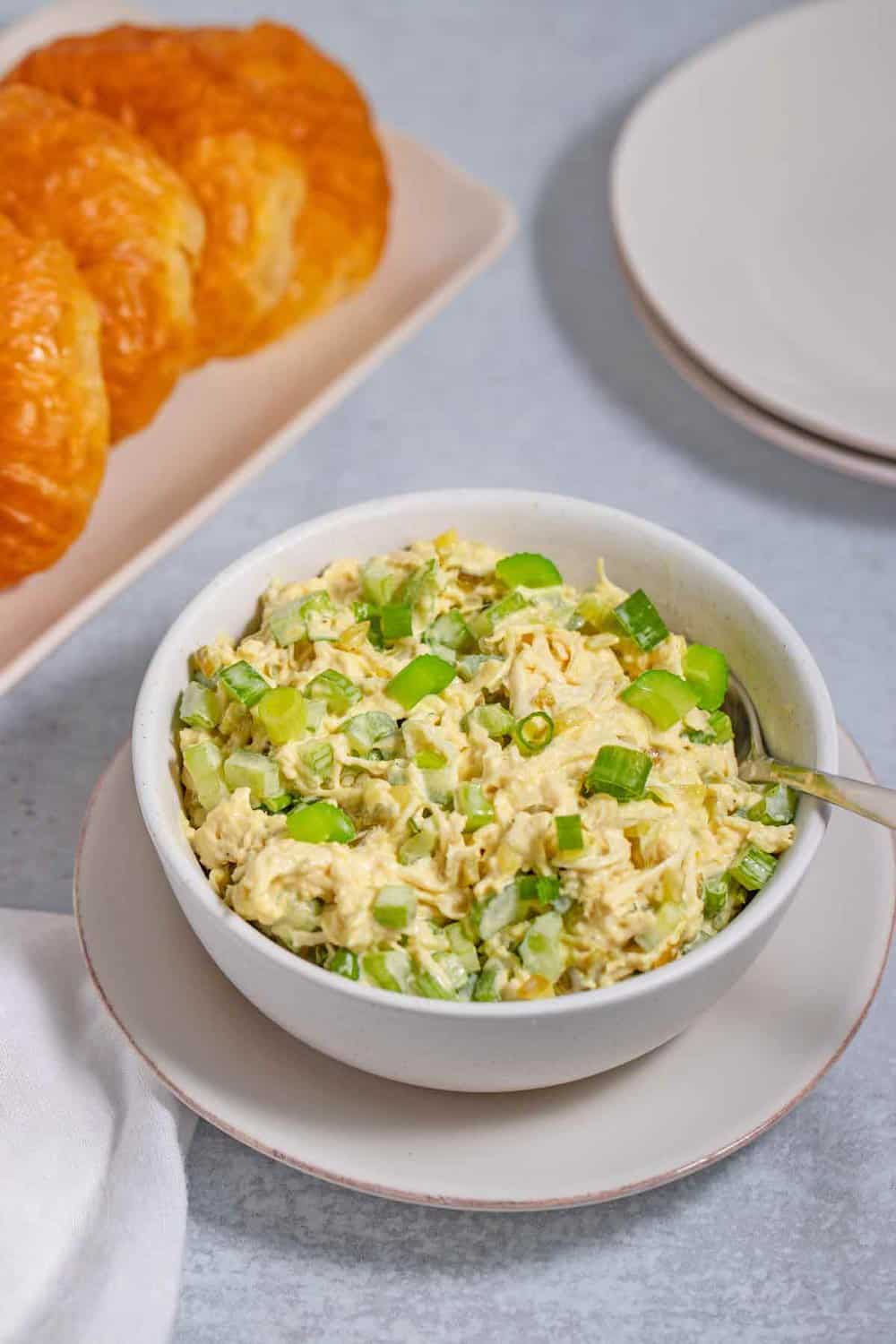
Comments
No Comments